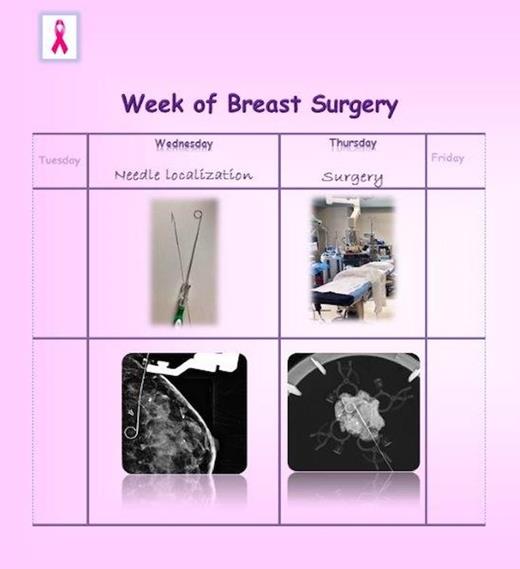-
Views
-
Cite
Cite
Linda M Sanders, Dina Morgan, Nicole Polini, Avani Mehta, Preoperative Wire Localization of the Breast on the Day Before Surgery, Journal of Breast Imaging, Volume 2, Issue 3, May/June 2020, Pages 240–249, https://doi.org/10.1093/jbi/wbaa015
Close - Share Icon Share
Abstract
To assess the feasibility and accuracy of preoperative wire localization performed one day prior to surgery and the relationship between the time interval following wire placement with migration distance within the time-window examined.
Two trials were performed with next-day mammography to assess migration. Trial 1 used a standard hooked wire (50 patients, 61 wires). Trial 2 employed a looped wire (50 patients, 59 wires). A third trial was subsequently performed (16 patients, 18 wires) using the looped wire without repeat mammograms. Complications were recorded. Comparative statistical analyses were performed between patients in Trial 1 and Trial 2.
In Trials 1 and 2, no wires required readjustment on the day of surgery. Mean and maximum migration were less with the looped wire (range: 0–7 mm) compared to the hooked wire (range: 0–18 mm), allowing for the elimination of next-day mammograms in Trial 3. A Mann–Whitney U test showed no significant difference between the migration distances for the first two trials (P = 0.11). A Chi-square test showed no significant difference in the direction of the migration between the two trials (P = 0.15). There was no correlation between the time interval of localization and needle migration in the first two trials (r = -0.16, P = 0.22 and -0.12, P = 0.36). Specimen radiographs demonstrated the lesion/biopsy marker clip in all cases in all three trials. No infections or bleeding occurred. Two patients developed an allergic reaction to adhesive.
Wire localization performed on the day before surgery is feasible, inexpensive, did not compromise accuracy, and successfully unlinked the radiologic and surgical procedures.






